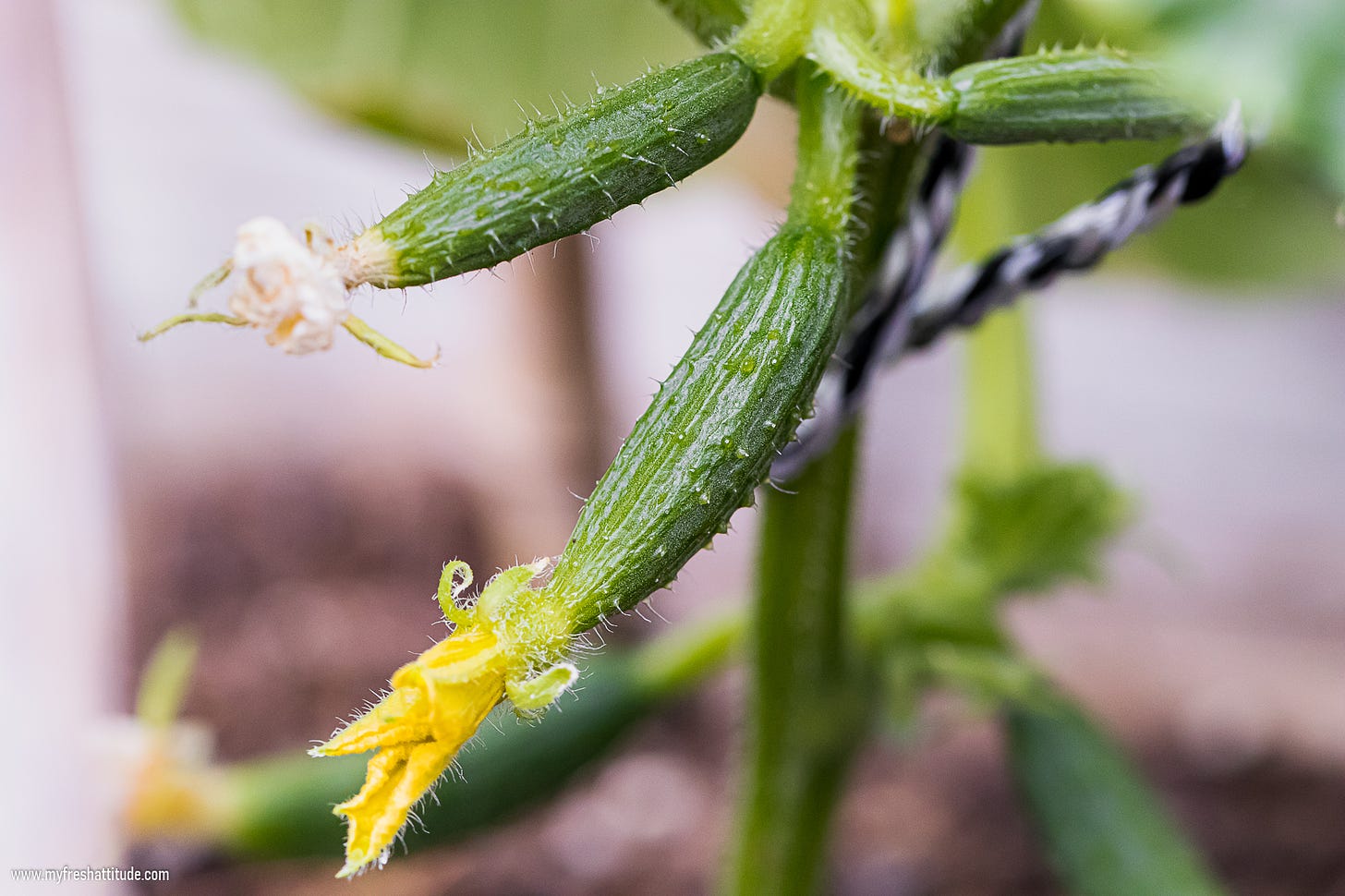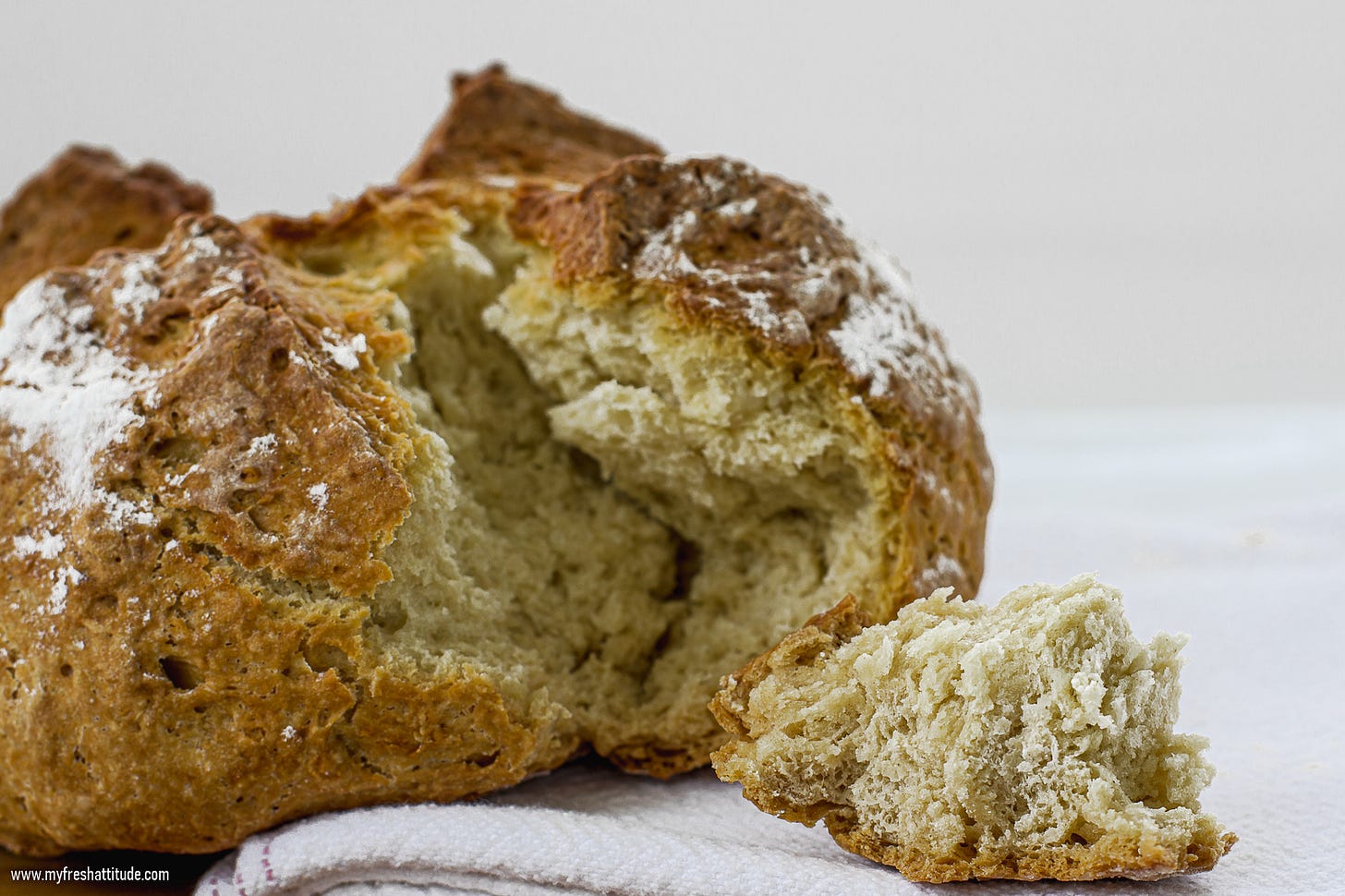Thinking About Food and My Irish-Moroccan Roots
From Whole Wheat Irish Soda Bread to a spring favorite using garden fresh vegetables…
I’ve involved with food and cooking in one way or another for most of my life.
I identify professionally as a Chef and Food Educator. But deep within me I know these are meaningless titles; it’s a path I follow – like many other people – to attain a bit of self-importance. Nevertheless, I can’t imagine a day in which I’ve not touched, smelled, seen, heard and tasted the results of something I cooked or grew…which means food represents a good deal of my true identity.
I can trace my first real connection to food with my first attempt at planting a garden. I was probably 11 or 12 years old when I first stuck my hands into the chocolate-brown earth without upsetting my mom or dad just to plant a few seeds. I couldn’t wait to get home from school so I could carefully water my little patch of the yard. I remember day after day gently moving away a bit of topsoil to see if any of the seeds I planted had sprung into life. Finally, I saw a tiny bit of green pushing its way through the earth and into the sunlight. I felt enormously proud. Several weeks later, I harvested four carrots and two radishes right there at the edge of my garden. Without hesitation, I rubbed off the dirt and enjoyed my harvest. My private salad tasted incredible – I felt the warmth of the sun in my mouth. I noticed a crunch from the slightly immature carrots and radishes – and a sugary sweetness I didn’t expect. I savored every second of that afternoon feast. And I couldn’t wait to unearth more of my garden’s treasures the next day.
I think about my first gardening experience each time I eat a raw carrot or radish. I like to compare the taste against my memory of growing a perfect vegetable. Whenever I plunge my hands into the dirt of my current garden, I feel a sense of connection to my past, to the earth and sun, to my food and the natural cycle of seasons. I feel the interconnectedness and health of all living things – a healthy environment produces healthy soil and healthy food.
Growing food in my own garden had a profound effect on who I am and what I think about today. But my intense connection with food extends way beyond my early garden memories.
Much of my food-related history is rooted in memories of my mother and her cooking. Her Moroccan upbringing allowed me a chance to experience unique food, tastes and cultures that few of my friends ever experienced. As a child, I saw how much time my mother spent in the kitchen to lovingly prepare something fresh and delicious. But I think her real motivation came from her desire to share those kitchen creations with her family. That was her purpose.
The other half of my cultural identity is Irish – and this side of my family roots is also filled with food connections. My great, great grandparents emigrated to America at a young age. Most of them eventually settled in the midwestern states to begin a life chasing the American dream. They were farmers and explorers. The family history of their experiences revealed great adventures, an extremely difficult life and plenty of tales of farming. One interesting story of my great, great grandmother describes a life of hardship and little money until she finally was able to land job working as a servant to a prominent Illinois politician. Her job was to cook for the family and help the mother with household tasks – a common position for Irish immigrants settling in the slave-free northern US states. But this was no ordinary politician she went to work for. This was Abraham Lincoln.
I chose this week’s recipes as a way to celebrate my connection to gardening and to my Irish roots.
Please leave a comment below and tell me about your special connection to food – especially plants.
Whole Wheat Irish Soda Bread
This is a great bread to make if you’re new to bread baking.
The dough is simple and comes together in minutes without any need for kneading. And, because of the lack of yeast in the dough, you won’t have to wait around while the dough proofs and rises. All that’s necessary is to mix together the dry and wet ingredients, form the dough into a ball or loaf, then put it in the oven and bake it. After an hour or so, your kitchen will be filled with the aromas of freshly baked bread carried by the escaping steam as you break the warm bread and reveal a moist and crumbly interior…perfect with a spoon of jam lathered on a slice.
Some versions of Irish soda bread include raisins in the dough as a variation but this is not the classical preparation. Instead, raisin filled soda bread is called a ‘spotted dog’ – a strange name but also delicious.
Irish soda bread can be made on a baking tray, in a loaf pan or in a ceramic oven-proof pot with a tight-fitting lid. My preference is to use the pot method because I like the extra crispy crust that is created from the trapped steam…which also produces a soft and crumbly interior.




